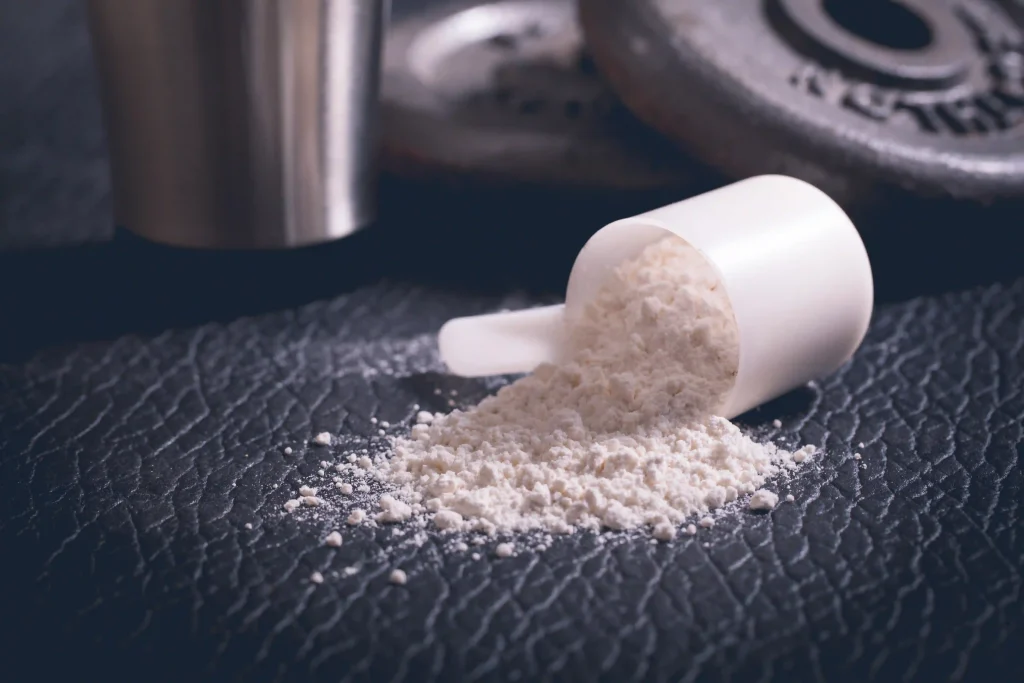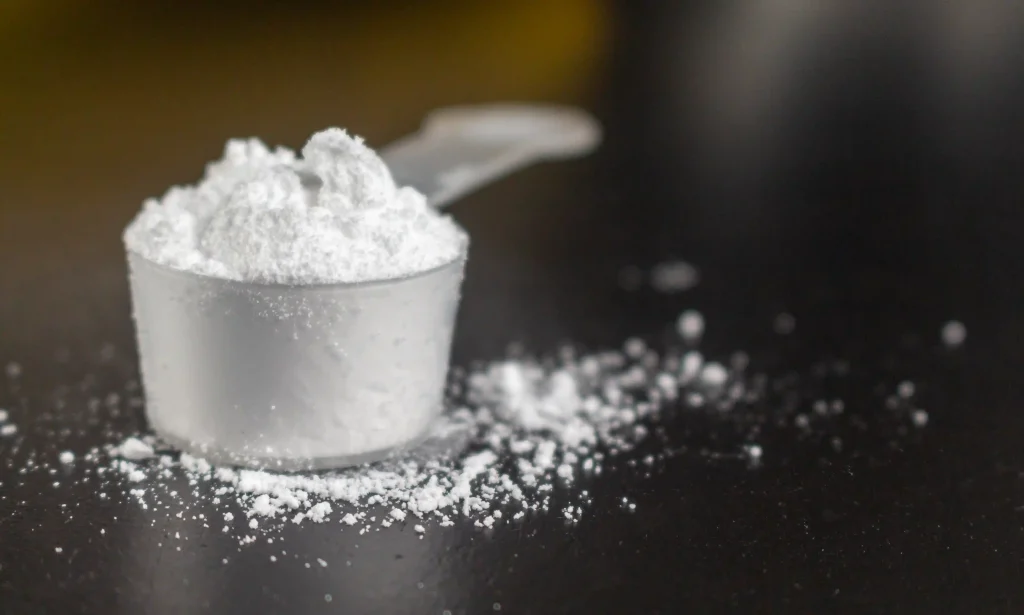The growing interest in creatine monohydrate powder represents a significant shift toward evidence-based nutrition strategies. Whether you’re a seasoned athlete pushing your limits in competitive sports, a dedicated gym-goer focused on strength gains, or someone just beginning their fitness journey, you’ve likely encountered discussions about this remarkable supplement. Today, we’ll explore the comprehensive world of creatine monohydrate powder, examining its benefits, applications, and why it continues to stand out in the crowded landscape of sports supplements.

The Fundamentals of Creatine Monohydrate
Understanding the science behind creatine monohydrate powder begins with its fundamental role in cellular energy production. This naturally occurring compound serves as a cornerstone in our body’s energy production system, particularly within muscle tissue. Picture creatine as your body’s specialized energy currency – when your muscles face demanding situations requiring immediate power output, creatine phosphate steps in as a crucial energy donor, facilitating the rapid regeneration of ATP (adenosine triphosphate), our cells’ primary energy source. What distinguishes creatine monohydrate is its impressive composition: 88% pure creatine content paired with 12% water molecules, creating an optimal structure for stability and absorption. This precise ratio has been extensively studied and proven to provide superior bioavailability compared to other forms, making it not only highly effective but also remarkably cost-efficient. The stability of this formulation ensures consistent performance and reliable shelf life, contributing to its status as the gold standard in sports nutrition supplementation.
Forms and Formulations: Powder vs. Pills
One of the most frequent consultations I provide involves comparing creatine monohydrate powder vs capsules. This decision point often creates considerable discussion among fitness enthusiasts, as both forms present distinct advantages and considerations. While both formulations contain identical active ingredients, their differences in absorption kinetics, cost-effectiveness, and practical application can significantly impact your supplementation strategy. The powder form typically demonstrates superior value for money and allows for precise dosage customization, though some individuals gravitate toward the convenience of creatine monohydrate pills vs powder, particularly when managing busy schedules or frequent travel commitments. This choice ultimately depends on various personal factors, including lifestyle demands, budget considerations, and individual preferences in supplement administration.
Let’s break down the key differences in more detail:
Absorption Rate and Bioavailability:
The powder formulation demonstrates superior dissolution characteristics and typically achieves faster absorption rates through the digestive system. When mixed with appropriate liquids, creatine monohydrate powder creates a solution that your body can process efficiently, maximizing its bioavailability. The pills, while convenient, must first break down their capsule or tablet coating before the active ingredient becomes available for absorption. This additional step can introduce variability in absorption timing and potentially impact the supplement’s immediate effectiveness. To optimize absorption, many users find success combining powder formulations with carbohydrate-rich beverages, as research indicates enhanced creatine uptake in the presence of insulin. This scientific understanding has led to the development of specialized mixing protocols that can significantly impact the supplement’s effectiveness.
Cost-Effectiveness and Economic Considerations:
From an economic perspective, creatine monohydrate powder consistently emerges as the more cost-effective option. The manufacturing process for powdered formulations is more streamlined, requiring fewer additional ingredients and processing steps compared to encapsulated versions. This efficiency translates directly to consumer savings, with powder forms typically providing 20-30% more servings per dollar spent. The best creatine monohydrate powder for men often comes in bulk packaging options, further enhancing its value proposition. Additionally, powder formulations allow for precise dosage control, preventing waste and ensuring optimal supplementation levels for individual needs.
Choosing the Right Product: A Comprehensive Analysis
When selecting a creatine monohydrate powder, several critical factors deserve careful consideration to ensure you’re investing in a product that will deliver optimal results. The selection process involves evaluating multiple aspects, from manufacturing quality to practical usage considerations:
Purity Levels and Quality Assurance:
The importance of product purity cannot be overstated when selecting creatine supplements. Look for products that guarantee at least 99.9% pure creatine monohydrate through independent laboratory testing. This high purity standard ensures you’re getting maximum benefit from each serving while minimizing the presence of unnecessary fillers or contaminants. Verify third-party testing certification through recognized organizations like NSF International or Informed Choice, which provide rigorous quality assurance protocols. Many leading manufacturers now offer micronized formulations, which undergo additional processing to create finer powder particles, resulting in better mixability and potentially improved absorption characteristics.
Scientific Evidence and Performance Benefits:
The scientific community has extensively studied creatine monohydrate powder, producing a robust body of evidence supporting its efficacy. Recent meta-analyses have demonstrated consistent performance improvements across various athletic disciplines and training modalities. Research findings indicate that regular supplementation can lead to:
1. Significant increases in muscular strength, with studies showing improvements ranging from 5-15% in maximum force production
2. Enhanced power output during high-intensity exercise, particularly beneficial for activities requiring explosive movements
3. Accelerated muscle recovery periods, potentially reducing post-exercise soreness and fatigue
4. Improved cognitive function, with emerging research suggesting neuroprotective properties
These benefits are particularly pronounced when the supplement is combined with structured resistance training programs. The scientific literature consistently demonstrates that creatine monohydrate powder users experience superior gains in lean muscle mass and strength compared to placebo groups, with effects becoming noticeable within 4-8 weeks of consistent use.
Practical Application Strategies:
Implementing creatine supplementation effectively requires careful attention to timing, dosage, and administration methods. Based on extensive research and real-world application, here’s a detailed approach to optimizing your supplementation strategy:
Loading Phase Protocols:
The traditional loading phase approach involves consuming 20-25 grams of creatine monohydrate powder daily for 5-7 days, divided into 4-5 equal servings. This protocol rapidly saturates muscle creatine stores, accelerating the onset of benefits. However, some users prefer a more gradual approach, taking 3-5 grams daily without a loading phase. While this method takes longer to achieve full saturation (typically 3-4 weeks), it may reduce the likelihood of digestive discomfort and is equally effective in the long term.
Maintenance and Long-Term Optimization
The journey with creatine monohydrate powder extends far beyond initial implementation, requiring careful attention to ongoing maintenance and optimization strategies. Long-term success with creatine supplementation depends on understanding how to adjust your protocol based on individual response, training demands, and lifestyle factors. Through years of research and practical application, we’ve identified several key factors that significantly influence the effectiveness of maintenance supplementation.
Daily maintenance typically involves consuming 3-5 grams of creatine monohydrate powder, though this baseline recommendation should be customized based on body mass, muscle composition, and activity level. Athletes engaging in high-volume training or individuals with greater muscle mass may benefit from slightly higher maintenance doses, potentially ranging from 5-8 grams daily. The key lies in maintaining consistent cellular creatine levels while avoiding unnecessary excess, which provides no additional benefit and may increase the economic burden of supplementation.
Hydration and Nutrient Timing Considerations
The significance of proper hydration during creatine supplementation cannot be overstated. Creatine functions as an osmolyte, drawing water into muscle cells, which necessitates increased fluid intake for optimal results. Research suggests increasing daily water consumption by 500-1000ml above baseline during creatine supplementation. This enhanced hydration status not only supports creatine’s mechanisms of action but also promotes overall training performance and recovery.
When it comes to nutrient timing, the conventional wisdom regarding specific timing windows has evolved based on recent research. While traditional protocols often emphasized post-workout administration, current evidence suggests that consistent daily intake is more crucial than specific timing. However, co-ingestion with carbohydrates and proteins can enhance creatine uptake through insulin-mediated mechanisms. This understanding has led to more flexible administration strategies that align with individual meal timing and training schedules.
Advanced Implementation Strategies
For those seeking to maximize the benefits of creatine monohydrate powder, several advanced strategies have emerged from recent research. Periodic assessment of individual response patterns allows for refined dosing protocols that optimize results while minimizing waste. Some athletes have found success with cyclical loading phases during intense training blocks, though the scientific evidence supporting this approach remains preliminary.
Monitoring and adjustment protocols should consider various indicators of effectiveness, including:
Performance Metrics:
Regular tracking of strength and power output provides objective measures of supplementation effectiveness. Progressive improvements in training volume and intensity often correlate with successful creatine implementation. Athletes should maintain detailed training logs to identify patterns in performance enhancement and potential plateaus that might necessitate protocol adjustments.
Body Composition Changes:
Changes in lean muscle mass and body water retention typically occur within the first few weeks of supplementation. Understanding these initial adaptations helps establish realistic expectations and allows for appropriate protocol modifications. Advanced users might consider periodic body composition assessments to track long-term changes and optimize their supplementation strategy.
Integration with Training Periodization
The most sophisticated approaches to creatine monohydrate supplementation consider its role within the broader context of training periodization. During high-volume training phases, maintaining elevated muscle creatine stores becomes particularly crucial for supporting recovery and adaptation. Conversely, during deload or maintenance phases, standard maintenance doses typically suffice.
Future Perspectives and Emerging Research
The landscape of creatine supplementation continues to evolve as new research emerges. Recent studies have begun exploring additional benefits beyond muscular performance, including potential neuroprotective effects and applications in cognitive enhancement. These findings suggest that the optimal implementation of creatine monohydrate powder might extend beyond traditional athletic applications.

Let me wrap up this comprehensive guide with some final thoughts and practical takeaways:
The Evidence-Based Conclusion
After examining the extensive research and practical applications of creatine monohydrate powder, it’s clear that this supplement maintains its position as one of the most thoroughly studied and effective ergogenic aids available. The scientific literature consistently supports its efficacy in enhancing athletic performance, muscle development, and recovery capacity. What distinguishes creatine monohydrate powder from other supplements is its remarkable safety profile, coupled with a substantial body of research validating its diverse benefits.
Making Your Decision
When deciding whether to incorporate creatine monohydrate powder into your regimen, consider your specific fitness goals, lifestyle demands, and individual preferences. The choice between powder and pill forms should align with your daily routine and practical considerations. Remember that success with any supplementation strategy relies heavily on consistency and proper implementation.
Final Recommendations
For optimal results with creatine monohydrate powder supplementation, maintain consistent daily intake, ensure adequate hydration, and combine supplementation with a well-structured training program. Monitor your body’s response and adjust protocols as needed. While individual results may vary, the foundational principles of proper dosing, timing, and implementation remain crucial for achieving desired outcomes.
Looking forward, the continued research into creatine’s broader applications suggests we may discover even more benefits beyond its traditional role in sports nutrition. As our understanding evolves, so too will the strategies for optimizing its use in various contexts.
Remember to consult with qualified healthcare professionals before beginning any new supplementation regimen, particularly if you have underlying health conditions or concerns. Your journey with creatine monohydrate supplementation should be well-informed, carefully planned, and aligned with your overall health and fitness objectives.
This guide reflects the current state of scientific knowledge and practical application strategies for creatine monohydrate powder supplementation. As research continues and new findings emerge, stay informed and adjust your approach accordingly to maximize the benefits of this remarkable supplement.



